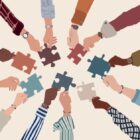
To end the age of incarceration, three communities pioneer a developmental approach
|
People ages 18 to 25 are over-represented at every stage of the criminal legal system and have the highest recidivism rate of any age group. It is obvious that we are responding badly to the developmental needs of these emerging adults — and “we” includes everything from schools and health care to law enforcement, judicial and correctional systems.
